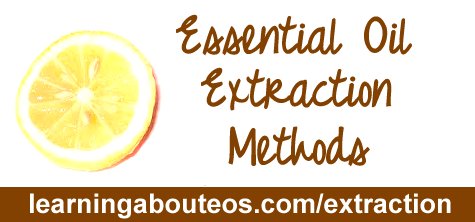
Essential Oil Extraction Methods
Essential oils are highly concentrated components extracted from plant matter: flowers, fruit, leaves, resin, twigs, seeds, or roots. There are four ways essential oils are currently being extracted:
Steam Distillation
Steam distillation is the most common method of extracting the essential oil from plant matter. This method involves steaming the plant matter of choice for a determined amount of time, under a specific pressure, and at a certain temperature so as to release the oil. The oil collected is now officially an “essential oil”, and the remaining water is sold as a “hydrosol”.
CO2 Extraction
This method is similar to steam distillation, only liquid CO2 is used instead of water. After the liquid CO2 and the plant matter combine, the CO2 is turned back into a gas, leaving the plant matter and essential oil behind. This provides a different, more pleasant, aroma than you would get from steam distillation, and is often the preferred method of extraction.
Cold-Pressing
This method involves mashing citrus rinds in water. The oil released is separated from the pulpy water and collected as an essential oil. Because pesticides are sprayed right onto the rinds, it’s important to seek organic options for cold-pressed essential oils.
Solvent Extraction
Purists don’t consider solvent extractions to be true essential oils, and they are typically labeled “absolutes.” This is due to the fact the plant material, usually flowers, are mixed with a solvent. Sometimes there is a significant amount of solvent left behind in the absolute, resulting in a less-pleasant aroma and lesser-quality end product. Traditional aromatherapists generally avoid absolutes, and don’t recommend them for pregnant women and children.
It is important to note that all essential oils are considered “pure” after extraction, regardless of the quality of the plant matter used.
Excerpt taken from the e-report, Using Essential Oils Safely. FREE when you sign up for our newsletter here.
| Lea Harris is a Certified Aromatherapist with Advanced Graduate training from Aromahead Institute in July 2013, but she is not a doctor. Please consult a trained aromatherapist or your doctor before using any of the suggestions on this website, as the user's age and health conditions must be taken into account before using. The information contained in this website is for informational purposes only, and should not be used as a substitute for professional medical advice. |


Comments
Powered by Facebook Comments